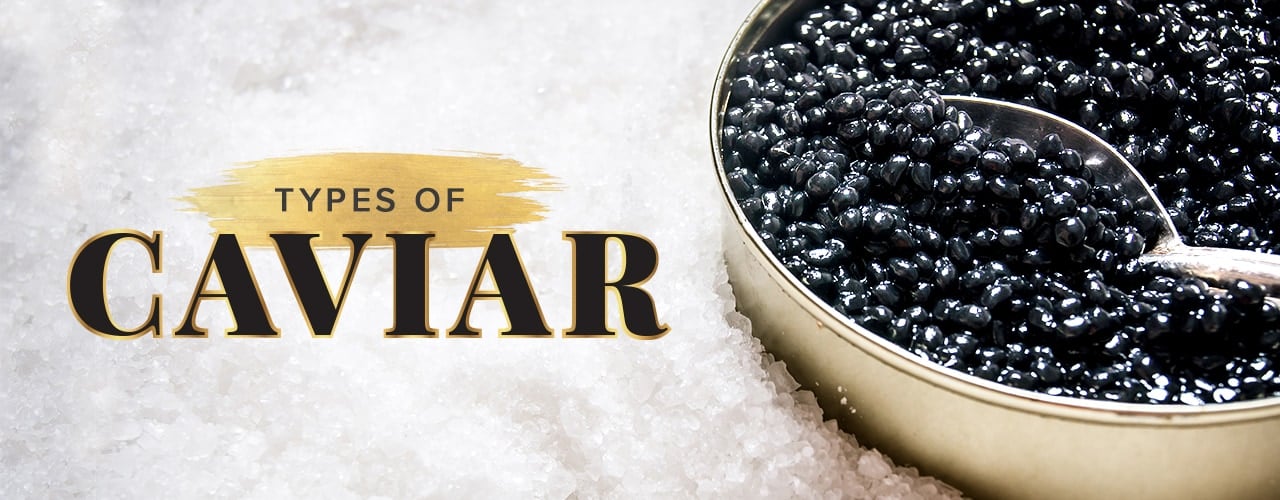Caviar is the eggs harvested from sturgeon fish. One of the defining characteristics of caviar is its rarity and expense. The sturgeon fish, particularly the Beluga, Ossetra, and Sevruga varieties, produce the highest quality caviar. Due to overfishing and habitat loss, sturgeon populations have significantly declined, making caviar even more scarce and valuable. The rarity and cost of caviar have contributed to its reputation as a luxury food item befitting Michelin star restaurant menus. We explain the different types of caviar available so you can choose the best option for your clientele.
What Does Caviar Taste Like?
While each type of caviar has a distinct taste, all caviar is pleasantly clean, crisp, briny, and sea salty. Much like clams and oysters, the waters where the sturgeon live affects the taste of the caviar and can impart nut, butter, sweet, and smoky notes.
Shop All CaviarHow to Eat Caviar
A standard serving of caviar is 15 grams per guest. This portion size allows you to fully appreciate the flavors without overwhelming your palate. Once you have your caviar portion ready, it's time to savor it. Rather than chewing, gently press the caviar onto the roof of your mouth using your tongue. This technique allows the delicate flavors to unfold and provides a unique texture experience. Treating the caviar tasting like a wine tasting can also enhance your overall experience.
Caviar experts and purists insist on serving caviar on the hand to detect its truest flavor profile. Spoon the caviar in the space on the top of your hand between your forefinger and thumb. From there, carefully lift your hand to your lips and tip the caviar into your mouth. Take a moment to let the caviar's flavors introduce themselves to you before swallowing. This allows you to fully appreciate the nuances and complexities of the caviar.
Types of Caviar
There are six main types of caviar, and each has a distinct color and flavor. Subtle differences in texture and size delight discerning caviar connoisseurs. Discover the differences between these types of caviar and how much each cost on average:
1. Beluga Caviar
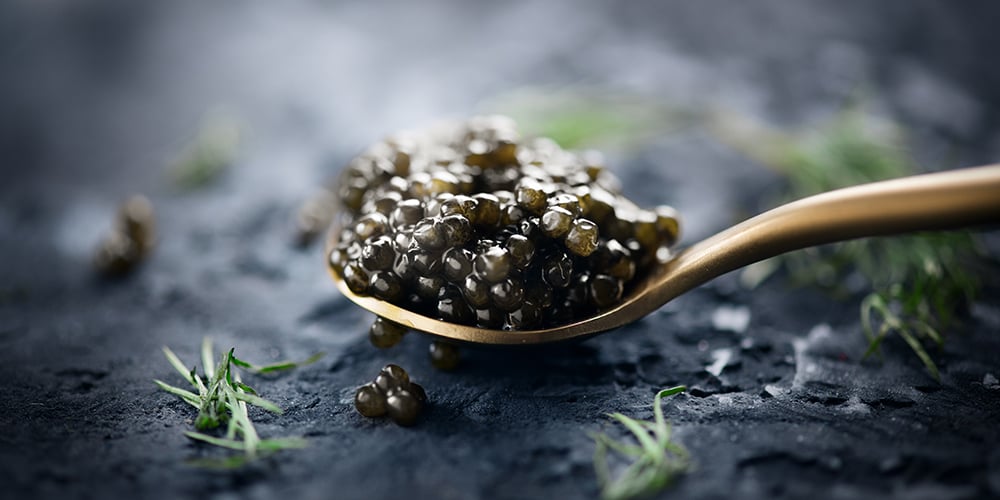
Beluga caviar is widely regarded as the rarest and most sought-after type of caviar. This luxurious delicacy comes from the Beluga sturgeon, a species that swims in the unpolluted waters of the Caspian Sea. It boasts an unadulterated rich, buttery, and creamy flavor enhanced by mild hazelnut essences. Visually stunning, it is light gray and has a pearlescent shine. However, the Beluga sturgeon population has significantly declined over the years due to overfishing. As a result, the species has become endangered, leading to a ban on the import of Beluga caviar to the United States.
Fish farmers have developed a more sustainable method of harvesting Beluga caviar by creating a hybrid variety known as Beluga Hybrid caviar. This innovative approach combines the Beluga and Siberian sturgeon, two species that take approximately 18 years to fully mature. By crossbreeding these sturgeon varieties, fish farmers can produce a caviar that closely resembles the highly prized Beluga caviar.
- Beluga Caviar Taste: Buttery, rich, creamy, mild, notes of hazelnuts
- Beluga Caviar Color: Light gray, pearlescent
- Beluga Caviar Price: $200-$300 per ounce
2. Ossestra Caviar
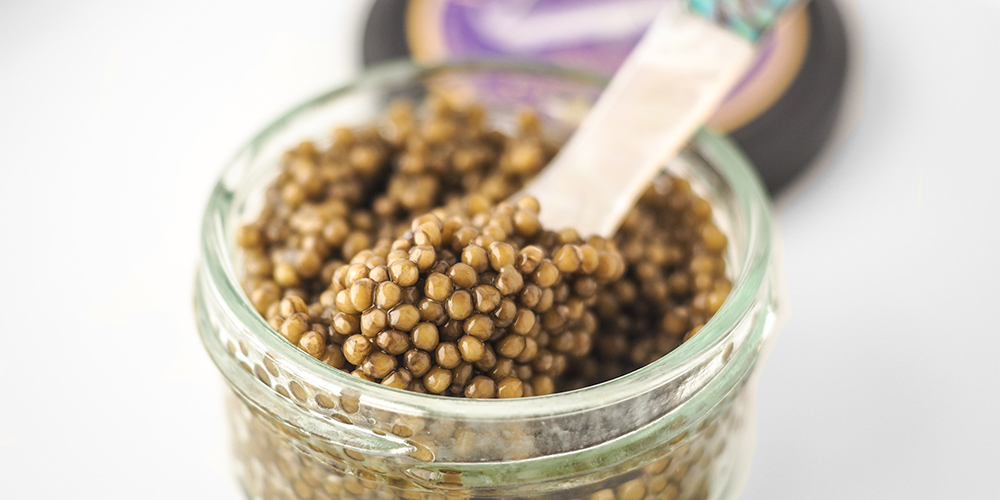
Ossetra caviar is the most popular and affordable high-end caviar. As a more accessible choice that doesn't compromise quality and flavor, it's a popular choice for commercial establishments. Ossetra caviar is known for its complex and nutty flavor profile. The eggs' color ranges from golden to dark brown. Experts often consider the larger eggs more desirable. Their texture is smooth and buttery, with a slight pop that releases a burst of flavor on the palate and creates a complex mouthfeel. These characteristics make Ossetra caviar a versatile ingredient that you can serve on its own, use as a garnish, or incorporate into various dishes to elevate their taste and presentation.
Ossetra caviar is derived from the eggs of the Ossetra sturgeon, a species of fish native to the Caspian Sea. However, it is important to note that Ossetra sturgeon is currently classified as an endangered species. This is primarily due to their low reproductive rate and the exploitation of overfishing, which has significantly impacted their population. Despite the challenges surrounding the conservation of Ossetra sturgeon, responsible caviar producers follow sustainable practices. Through strict regulations and ethical sourcing, reputable suppliers conduct their Ossetra caviar production in a manner that minimizes harm to the sturgeon population and their natural habitat.
- Ossetra Caviar Taste: Buttery, nutty, briny, bright, hints of citrus
- Ossetra Caviar Color: Dark brown, gray, gold, or black, depending on the variety
- Ossetra Caviar Price: $50-$175 per ounce depending on variety
3. Sevruga Caviar
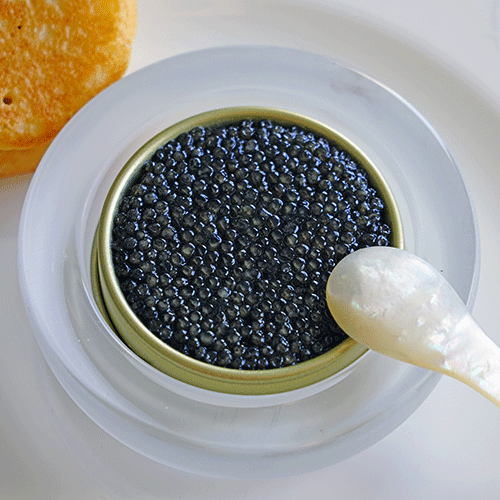
Sevruga caviar is a type of European caviar that compares with the Beluga and Ossetra varieties. It is packed full of the flavor of its natural merroir, which is derived from the Caspian, Black, and Aegean Seas. One of the distinguishing features of Sevruga caviar is its size. It is the smallest among the three most luxurious types of caviar, namely Beluga, Ossetra, and Sevruga. Despite its petite size, Sevruga caviar is known for its full-bodied flavor and smooth, velvety texture. Its distinct taste and small size make it a versatile option for culinary applications, allowing chefs and food enthusiasts to experiment with different flavor combinations and create artful plating presentations.
When it comes to taste, Sevruga caviar offers a unique profile that is briny, nutty, clean, and crisp. Its flavor is often described as intense and complex, making it a favorite among caviar connoisseurs. Visually, Sevruga caviar exhibits a striking appearance. Its eggs have a distinctive steel gray to pearlescent hue, which ranges from light to dark charcoal gray. This visual appeal adds to the overall experience. Whether enjoyed on its own or used as a garnish, Sevruga caviar is a delicacy that adds a touch of luxury to any dish.
- Sevruga Caviar Taste: Full-bodied, briny, nutty, clean, crisp
- Sevruga Caviar Color: Steel gray and pearlescent to dark charcoal gray
- Sevruga Caviar Price: $50-$120 per ounce
4. Hackleback Caviar
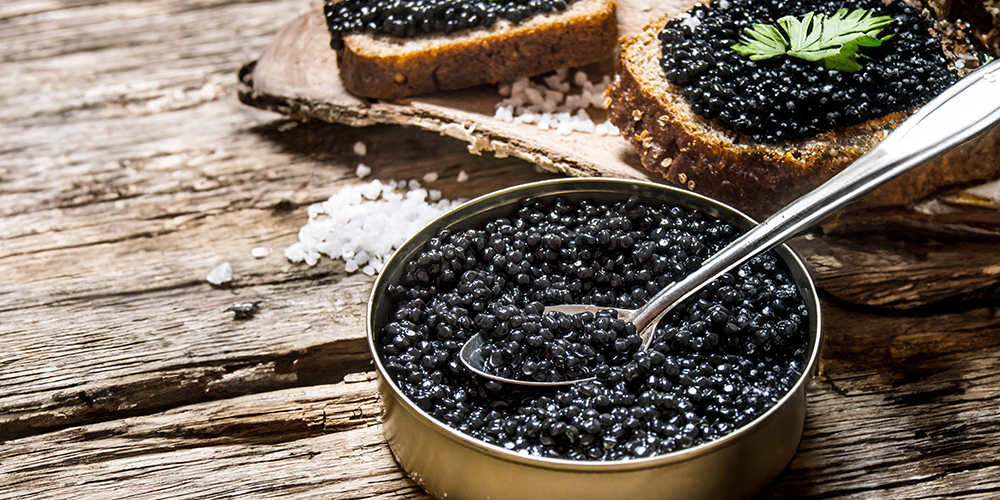
Hackleback caviar, also known as Shovelnose Sturgeon caviar, is a type of American caviar. This variety of caviar is an excellent alternative to European-imported caviar, as it offers a similar taste and texture at a lower price point. Unlike other types of caviar, they do not produce Hackleback caviar through aquaculture or farming. It's sourced from wild Shovelnose Sturgeon that inhabit the rivers of the southern United States. Since it's naturally produced in its native environment, Hackleback caviar is of the highest quality.
To ensure that the sturgeon population is not over-fished, they carefully regulate the harvesting of Hackleback caviar. This helps to preserve the species and maintain a healthy ecosystem in the rivers where they reside. In terms of appearance, Hackleback caviar bears a striking resemblance to the prized Sevruga caviar. It features small, glossy black grains that have a firm texture and a rich, nutty flavor. Opting for Hackleback caviar can increase your profit margins because it is a more affordable yet high-quality option that offers unique taste and aesthetic qualities.
- Hackleback Caviar Taste: Intense, deep, sweet, nutty
- Hackleback Caviar Color: Jet black and shimmery
- Hackleback Caviar Price: $35-$45 per ounce
5. Kaluga Caviar
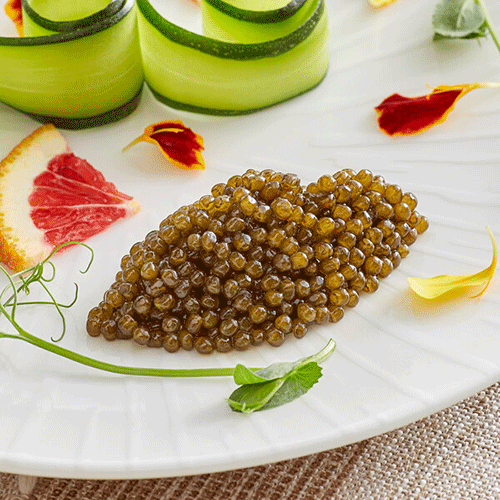
Kaluga caviar comes from various river basins and seas around Asia. What sets Kaluga caviar apart is its sustainable sourcing. European sturgeons, including the Beluga sturgeon, have been severely over-fished, resulting in their population decline. In contrast, Kaluga sturgeons, which produce Kaluga caviar, are more abundant, and their populations are carefully managed to ensure long-term survival. Kaluga caviar is known for its large, glossy pearls that range in color from dark gray to light brown. These pearls have a rich, buttery flavor and a hint of nuttiness. The texture is smooth and velvety, making it a favorite among caviar connoisseurs.
Sometimes referred to as "River Beluga," Kaluga caviar is a cousin of the famed Beluga sturgeon and closely resembles the taste of the prized Beluga caviar. It has become the top competitor to Beluga caviar in the US because it is a more sustainable alternative. Its availability and competitive pricing make it an attractive option for those who want to enjoy the luxurious experience of caviar without contributing to the decline of endangered sturgeon species. Consider adding a bowl of Kaluga caviar to your trendy seafood charcuterie board.
- Kaluga Caviar Taste: Earthy, buttery, salty
- Kaluga Caviar Color: Light to dark brown or golden hue
- Kaluga Caviar Price: $65-$85 per ounce
6. Sterlet Caviar
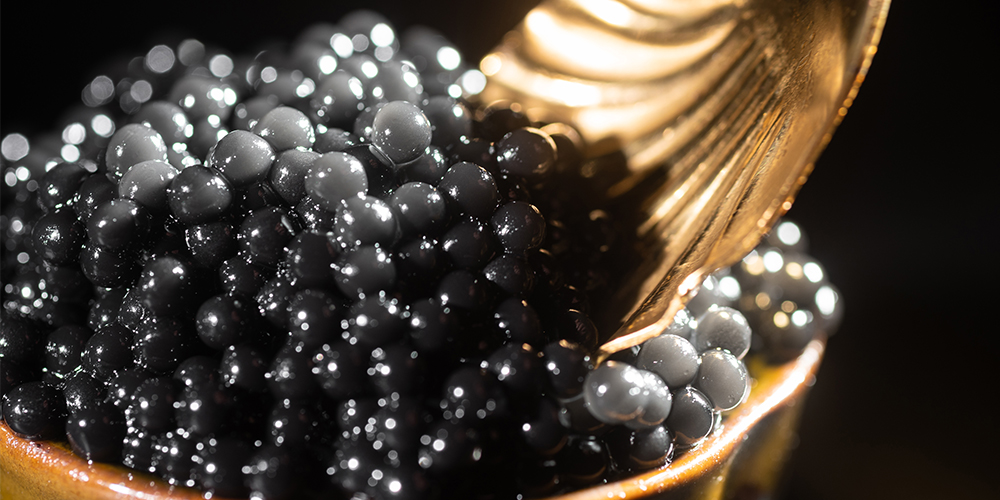
Sterlet caviar is a type of European caviar that originates from the Caspian, Black, Aegean, and Azov seas, as well as the rivers of Siberia. This delicacy closely resembles Sevruga caviar in taste but is even smaller. Sterlet caviar is known for its rarity and higher price point. Sterlet sturgeons, the fish from which this caviar is sourced, are currently endangered due to overfishing. As a result, the limited availability of Sterlet caviar contributes to its exclusivity and higher cost.
In terms of flavor, Sterlet caviar boasts a mild, nutty, and buttery taste that is highly sought after by caviar connoisseurs. Its texture is smooth, and its eggs are delicately sized, making it a refined and elegant choice for those who appreciate the subtleties of caviar. Visually, Sterlet caviar exhibits a range of colors, from light to dark gray, with shiny silver undertones. This color variation adds to its aesthetic appeal, making it an attractive choice for garnishing and enhancing the presentation of dishes, making them stand out in Instagram photos and on other social media platforms.
- Sterlet Caviar Taste: Mild, nutty, buttery
- Sterlet Caviar Color: Light to dark gray with shiny silver undertones
- Sterlet Caviar Price: $50-$100 per ounce
Roe vs. Caviar
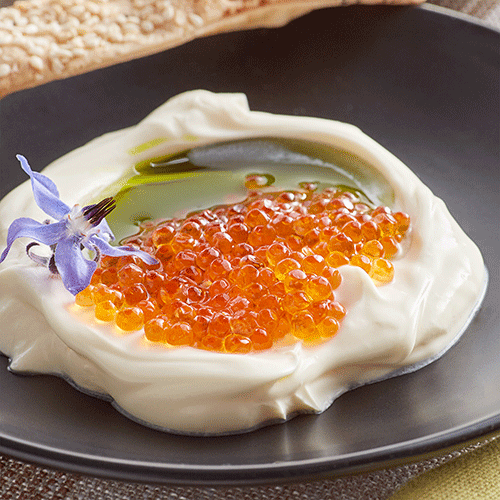
When it comes to luxury food items, few can rival the exquisite taste and texture of caviar. However, there is often confusion between the terms "roe" and "caviar". While both refer to fish eggs, there are distinct differences that set them apart. Roe is a term that classifies all fish eggs. Caviar falls under the broader classification of roe; however, to be caviar, the fish eggs must come from a sturgeon. Sturgeons are prehistoric fish that chefs have prized for their roe for centuries. Other types of fish eggs, such as salmon, trout, or whitefish, are referred to as roe. The flavor profile of roe varies depending on the fish species; some are mild, and others are robust.
The distinction between roe and caviar lies not only in the type of fish but also in the preparation process. To be considered caviar, the sturgeon eggs must undergo a salt curing technique, most commonly known as the Malossol technique. This method involves lightly salting the eggs to enhance their flavor and preserve their quality. The term "Malossol" is derived from Russian, meaning "little salt," indicating the minimal amount of salt used in the curing process. On the other hand, roe from other fish species, while still highly valued in certain culinary applications, is typically not subjected to the same salt-curing process. Roe is a popular ingredient in dishes like sushi, garnishes, or spreads.
Back to TopCaviar Serving Chart
Use our caviar serving chart to plan your menu:
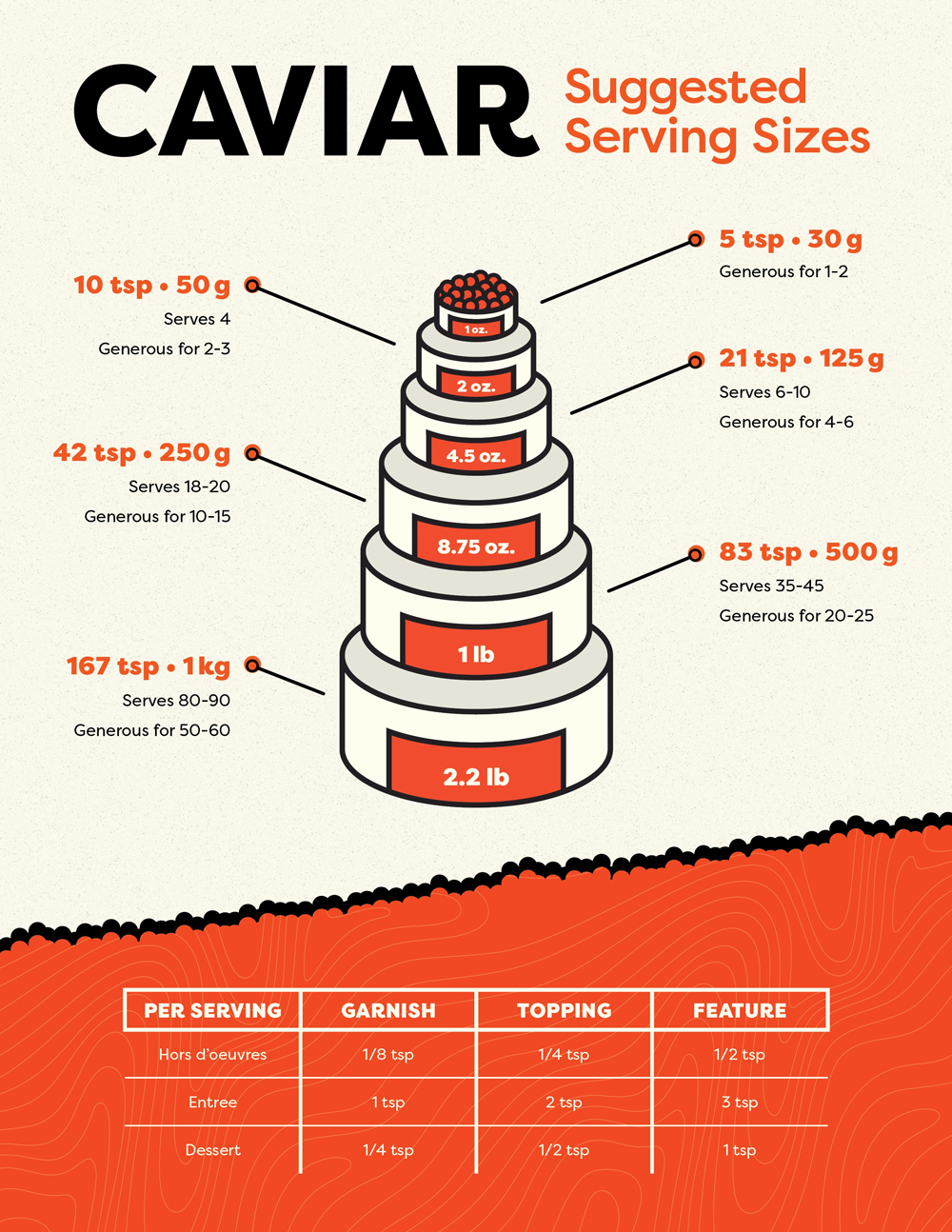
How to Serve Caviar
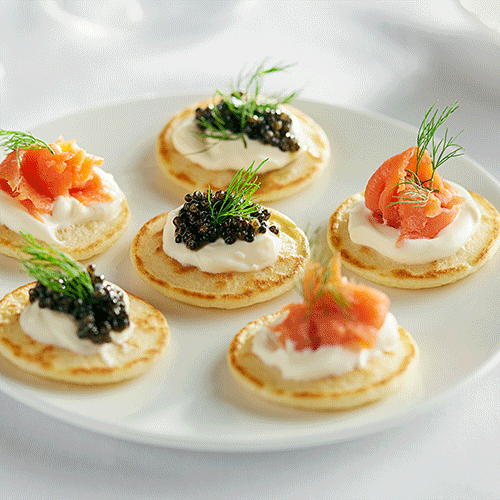
Having the right tools is essential when serving caviar. A mother-of-pearl spoon is the ideal spoon for serving caviar because it does not alter the subtle, delicate flavors of caviar. Metal utensils produce a metallic flavor that compromises the pure, fresh taste and will instantly ruin your expensive investment. Glass, ceramic, and bone serveware are suitable options, though mother-of-pearl is the most traditional and, not to mention, opulent and luxurious looking.
A traditional caviar dish, complete with ice and a separate compartment for the caviar, can help maintain the optimal temperature and presentation. If you’re serving caviar among other accompaniments as an appetizer or table spread, the best way to eat caviar with other ingredients is served on a simple blini, unsalted cracker, or toast point. When presented on these vessels, it's usually served alongside lemon wedges, creme fraiche, chopped herbs, and minced onion.
How to Store Caviar
Opened tins of caviar can be stored for up to three days in the coldest part of a refrigerator. Unopened containers can be stored in the refrigerator for four to six weeks. Caviar is extremely perishable, delicate, and expensive, so it’s imperative to only buy the amount of caviar you predict will be consumed.
How Much Is Caviar?
The price of caviar ranges greatly depending on its variety. For just one ounce of caviar, it can cost anywhere between $35 to $300. If this is out of your price range, consider buying roe instead. Herruga roe and paddlefish roe most closely resemble the look and taste of caviar and are in the $6-$24 per ounce range.
What Is the Most Expensive Caviar?
The most expensive caviar in the world is Strottarga Bianco, averaging about $113,630 per kilogram. This caviar comes from the Siberian Albino Sturgeon, producing white-gold eggs that are then dehydrated and folded with shaved flecks of edible gold. These fish are farmed in Salzburg, Austria.
What Is the Cheapest Caviar?
The cheapest caviar available is Hackleback Caviar, averaging $35-$45 per ounce.
Back to TopKnowing the different types of caviar available not only makes you a more knowledgeable gourmand, it also allows you to create an exciting menu, taking your restaurant to new heights. Remember to purchase sustainably harvested caviar for the best quality and to keep the caviar experience available for future generations.
